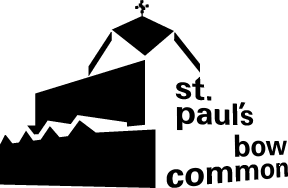|
See more on his wikipedia page Obituary in the Guardian, 22nd Aug 2006 which reads One of Kirkby's achievements was the building of the new church, consecrated in 1960, and described at the time by the Architectural Review as the most important church built in the 20th century. He chose the architects - Robert Maguire and Keith Murray (obituary, November 29 2005) - and they asked the question: "What will Christian worship be like in the year 2000, and how can we build a church to reflect this?" The liturgy at Bow Common followed the Roman rite, but anticipated the reforms of the Second Vatican Council by at least 10 years. For many years the Divine Office was sung daily to Gregorian chant. "Rome will catch up with us eventually", said Kirkby, and to some extent this was the case. As an anarchist socialist - he usually said "anarchist communist" before 1956 - he was influenced by Kropotkin and by Dorothy Day, founder of the Catholic Worker movement in the United States. The Bishop of London visited him in hospital two days before his death and reported that Kirkby had "proclaimed his undying faith in anarchy". He was one of the first priests to march to and from Aldermaston, and probably the first priest to go to prison for anti-nuclear activities, in 1961. He certainly livened up the worship in Brixton prison chapel during his time there. He was the last surviving member of the League of the Kingdom of God (founded in 1922), and chaired the Socialist Christian League until its dissolution in 1960. He had no sympathy with reformist socialism, especially the Blairite version of it. |




 The Vicar, the Revd Gresham Kirkby, was a young radical who drew likeâ€minded people about himself. At that time there was a serious re-evaluation in progress among churches and architects as to the function of a church, and how its building should express its deepest purposes. Interest was stirring at that time in the earliest forms of church architecture and in exploring the very roots of Christian worship.
The Vicar, the Revd Gresham Kirkby, was a young radical who drew likeâ€minded people about himself. At that time there was a serious re-evaluation in progress among churches and architects as to the function of a church, and how its building should express its deepest purposes. Interest was stirring at that time in the earliest forms of church architecture and in exploring the very roots of Christian worship.